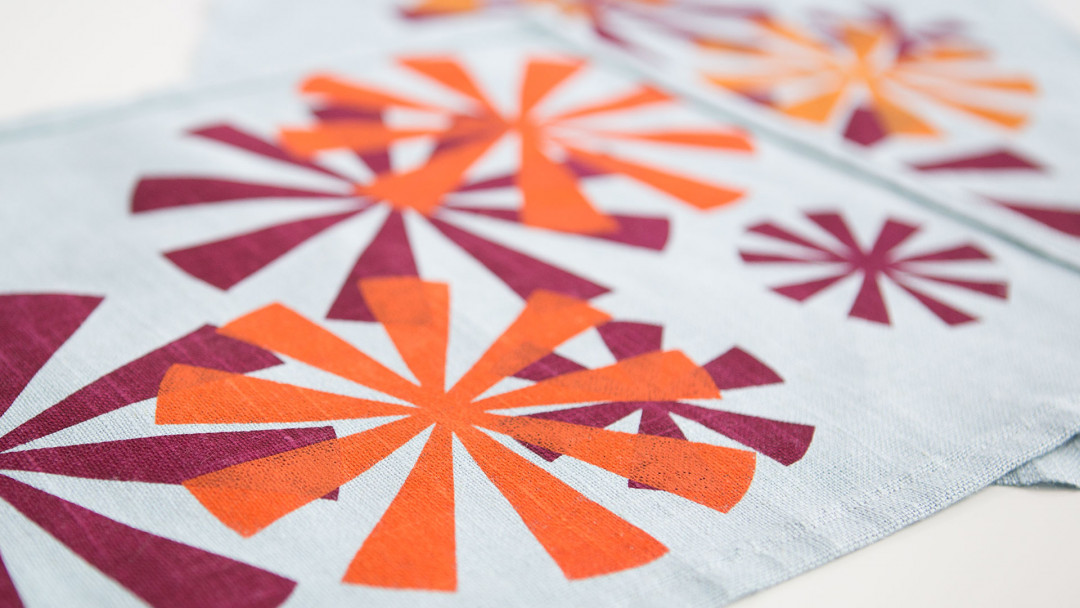From Design to Delivery: Mastering the Art of T-Shirt Screen Printing
The journey from design to shipment in t-shirt screen printing includes a collection of essential stages that require interest to detail and critical preparation. It begins with recognizing the nuances of your target market, followed by the selection of appropriate products and the prep work of art work that fulfills high requirements. Yet, as the procedure unravels, difficulties in quality control and logistics can emerge, potentially affecting the last end result. Checking out these intricacies exposes not only the ins and outs of screen printing however additionally the necessary methods that can raise a brand's standing in an open market.
Recognizing T-Shirt Screen Printing
Understanding T-Shirt screen printing entails acknowledging a flexible and extensively utilized technique for moving styles onto textile. This strategy uses a mesh and a pattern screen to apply ink onto numerous fabric materials, mostly cotton and polyester blends. The procedure begins with the creation of a display that includes the wanted style, which is then carefully straightened on the textile.
Ink is pressed via the screen's open areas using a squeegee, enabling precise application of shade. This method is favored for its capacity to generate lively, durable prints that hold up well to cleaning and wear. Furthermore, screen printing is capable of accommodating both complex and simple layouts, making it a preferred option for personalized clothing, advertising products, and even creative jobs.
In addition, screen printing offers scalability, making it suitable for both small batch orders and large-scale manufacturings. While first configuration expenses might be higher compared to other printing methods, the effectiveness and longevity of screen printing frequently justify the investment. In general, recognizing the principles of Tee shirts screen printing is essential for any individual wanting to take part in this prominent kind of material decoration, whether for personal tasks or industrial undertakings.
Conceptualizing Your Layout
Conceptualizing your style is a vital action in the Tees screen printing process, as it establishes the foundation for the whole project (Business Branding Services). This phase involves producing concepts that resonate with your target audience while ensuring that the layout lines up with the brand name's identity and message. It is important to begin by exploring styles, shade plans, and graphics that show the desired aesthetic
Mapping out initial ideas can be useful, enabling an aesthetic depiction of concepts before completing the layout. Think about using typography, imagery, and layout in such a way that captures interest and interacts successfully. Furthermore, it is crucial to expect the printing technique that will certainly be employed, as this can influence design complexity and shade selections.
Participating in brainstorming sessions with employee or seeking comments from possible consumers can also boost the concept process, giving diverse viewpoints that improve the design. Eventually, a well-balanced design not only enhances the visual charm of the Tee shirts however likewise fosters a connection with the audience, driving interest and possible sales. Committing time to conceptualize your layout can lead to an effective screen printing outcome.
Picking the Right Products

The weight of the textile, usually determined in grams per square meter (GSM), affects the drape and overall feel of the T-shirt. Larger textiles may give an extra exceptional look, while lighter alternatives fit for informal wear. Texture also plays a role; smoother fabrics have a tendency to yield sharper prints, while textured surface areas can create unique aesthetic results.
In addition, consider the environmental impact of materials. Organic cotton and recycled polyester are gaining popularity among eco-conscious consumers. Eventually, choosing the ideal products includes balancing aesthetic appeal, functionality, and sustainability, making sure that the T-shirt not only looks fantastic however additionally satisfies the assumptions of your target market.
Preparing Artwork for Printing
Preparing art work for T-shirt screen printing calls for mindful attention to detail to assure that the final print properly shows the designated design. The primary step is to produce a high-resolution electronic documents, preferably in vector style, as this permits scalability without loss of high quality. Common software application made use of for this purpose includes Adobe click this link Illustrator and CorelDRAW.
Next off, verify that all text is converted to outlines or rasterized to avoid font problems throughout printing (Abilene T-Shirt Screen Printing Company). Additionally, it is vital to verify that the color mode is readied to CMYK, as this lines up with the printing procedure. Pay attention to color matching; utilizing Pantone shades can help accomplish uniformity across various prints
Take into consideration the dimensions of the print location and maintain proper margins to avoid layout cutoff. It's also important to consist of registration marks for positioning during the printing process. Screen Printing. Request an evidence from the printer to envision the last product before mass manufacturing. This action is essential for recognizing any type of possible issues, ensuring that the published Tee shirts meets the wanted high quality and style requirements. Correct preparation of artwork significantly affects the total success of the screen printing task
Mastering the Printing Process
Grasping the printing procedure is necessary for accomplishing high-grade outcomes in T-shirt screen printing. This phase entails numerous significant steps that directly influence the end product. The very first step is establishing the printing press properly. Appropriate registration of screens warranties that shades line up correctly, stopping misprints and ensuring a professional appearance.
Next, picking the best ink is very important. Various ink kinds, such as plastisol or water-based, deal numerous surfaces and longevity. Recognizing the textile structure of the Tees additionally assists in picking compatible inks.
Managing the squeegee stress and angle is important when it comes to the real printing. Constant stress will certainly produce even ink distribution, while the angle influences the circulation and protection. In addition, changing the rate of the printing press can affect the ink's treating procedure, which is essential for guaranteeing longevity.
Quality Assurance and Finishing
After the printing procedure is full, executing reliable high quality control steps comes to be vital to confirm that each Tee shirts meets the wanted criteria. Quality control entails a systematic approach to checking each garment for defects, confirming that the print quality, shade precision, and material honesty line up with the specifications established during the layout phase.

The initial step in high quality control is a complete visual evaluation. This requires checking for usual concerns such as imbalance, ink smudges, or fading. Any kind of T-shirt that does not fulfill the top quality benchmarks ought to be addressed promptly, either through reprinting or repair work.
Along with visual checks, it is essential to perform clean tests on an example of published shirts to examine the durability of the inks and the total longevity of the design. These tests help validate that the print will maintain its vibrancy and integrity after numerous cleans, an essential factor for consumer contentment.
Finishing touches, such as string cutting and the application of treatment tags, additionally play a significant function in quality control - Screen Printing. By concentrating on these elements, organizations can enhance the total presentation of their items, inevitably leading to a more satisfying customer experience
Packaging and Shipment Solutions

To accomplish optimal packaging, consider utilizing green materials that line up with sustainability trends, such as recyclable poly bags or biodegradable boxes. Each T-shirt need to be neatly folded up and placed in protective covering to prevent creasing and possible damages during transportation. Consisting of a well-known insert or treatment directions can even more customize the experience, cultivating client loyalty.
When it concerns distribution, selecting a reliable shipping companion is essential. Review options based on monitoring, speed, and cost capacities. Offering multiple shipping techniques can accommodate various customer needs, from standard to expedited delivery.
Frequently Asked Concerns
What Are the Usual Errors Novices Make in Screen Printing?
Usual errors newbies make in screen printing consist of inappropriate screen preparation, insufficient ink blending, wrong direct exposure times, not enough curing, and disregarding to evaluate prints. These mistakes can result in low quality and poor results in last items.
Exactly How Can I Protect Against Ink From Bleeding During Printing?
To avoid ink blood loss during printing, assurance appropriate screen tension, use proper emulsion thickness, select the best ink uniformity, maintain excellent curing temperatures, and avoid straining the screen with too much ink during application.
What Sorts of Inks Are Finest for Different Fabrics?
Picking inks based on textile kind is essential. Water-based inks are excellent for cotton, providing gentleness. Plastisol inks match artificial materials, using toughness. Release inks properly mix with natural fibers, ensuring dynamic shades without endangering fabric honesty.
How Do I Choose the Right Screen Mesh Count?
Selecting the appropriate screen mesh count depends upon the preferred print information and ink type. Abilene T-Shirt Screen Printing Company. Greater mesh matters produce finer details, while reduced counts facilitate thicker inks. Analyze textile kind and style complexity for excellent results
Can I Utilize Screen Printing for Tiny Batch Orders?
Yes, screen printing can be efficiently made use of for small set orders. This approach allows for detailed designs and top notch outcomes, making it a viable alternative for custom apparel, promotional products, or limited edition runs.
Understanding T-Shirt screen printing involves identifying a flexible and widely utilized approach for transferring styles onto textile. While preliminary arrangement prices may be higher compared to various other printing methods, the effectiveness and longevity of screen printing often warrant the investment. Preparing artwork for Tee shirts screen printing needs cautious attention to detail to ensure that the last print properly shows the intended layout. Mastering the printing procedure is necessary for achieving high-grade outcomes in Tee shirts screen printing. Typical errors newbies make in screen printing consist of improper screen prep work, inadequate ink mixing, incorrect direct exposure times, inadequate treating, and overlooking to evaluate prints.